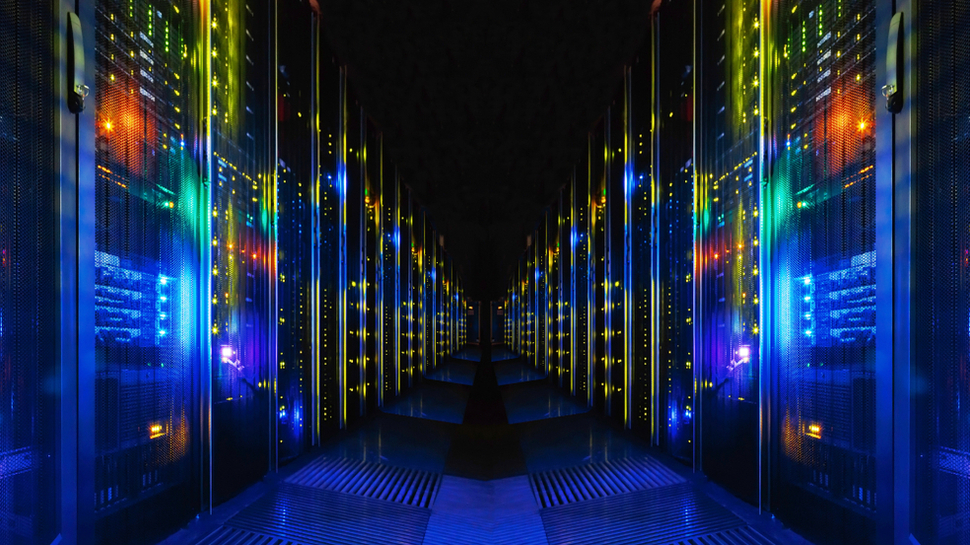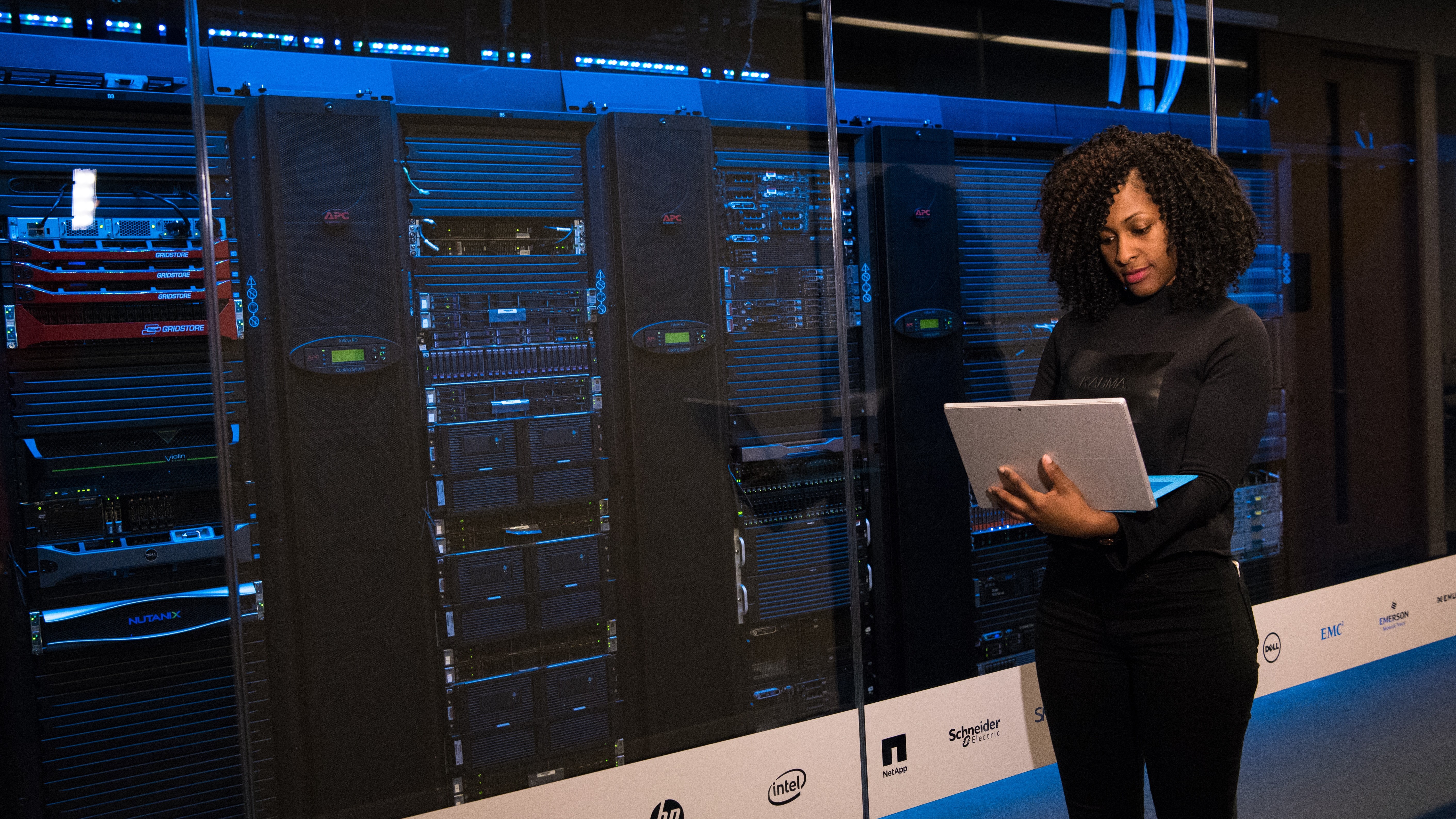The importance of data centers during the pandemic
Today's digital economy depends on data centers

During the early days of the coronavirus outbreak many wondered if the internet would end up going down due to the dramatic increase in traffic from remote working, distance learning and people keeping themselves occupied while stuck at home.
In fact, research from Cloudflare revealed that internet usage swelled by over 25 percent in most major cities around the world as a result of lockdown measures. Thankfully though, data center providers were able to upgrade capacity to handle this added strain on their networks.
To learn more about how data centers were able to adapt to this surge in internet usage, TechRadar Pro spoke with the President and CEO of CyrusOne, Tesh Durvasula.
- 44Tbps is officially the world's fastest internet speed
- Global appetite for website building reaches new highs during pandemic
- Internet access hangs by a thread for hundreds of millions
How have data centers coped with the recent surge in internet usage as a result of the global pandemic?
For those of us at CyrusOne, it’s been incredibly humbling to watch as our portfolio of data centers throughout the United States, Europe, Asia, and South America play a central role in the fight against this dangerous pathogen. Data has never been more important – in fact, it’s mission-critical, the life’s blood of today’s emergency response, business continuity, education, entertainment, and almost every industry on earth. At this great company, we stand proud to be on the front lines of this effort, marshaling the power of connectivity to deliver data where and when it is needed most, helping countries, businesses, and communities weather the storm.
The COVID-19 global pandemic has highlighted the importance of data centers. Data centers have remained agile as a result of the sudden, increased reliance on the internet as societies adjust to social distancing. Data brings the world together. However, COVID-19 has brought the importance of these words into striking focus. Without data, our businesses, schools, and hospitals would grind to a halt. Without data, our communities couldn’t track, treat, and prevent the spread of this dangerous virus. Without data, countries all over the world would fall into disarray.

Were the world’s data centers prepared for an event like this, and is there any possibility that it could lead to the internet outages in some regions?
If you think back 25 years, singular events (livestream broadcasts, significant retail sales, and significant news events) would “crash the internet.” Over the past quarter-century, the connectivity sector has upgraded capacity, throughput, and performance in a predominately self-regulatory environment. This has created a powerful mesh that is scalable and durable. Digital healthcare, financial services, gaming, streaming content, these sectors deliver results for billions of people around the world, and that is because of the success of the industrialization of the internet these past few years.
What changes has CyrusOne implemented to cope with the increased load on its systems?
We remain focused on the safe operation of our facilities, data center uptime, and the protection of essential data center engineers and technicians that run our facilities. Our Pandemic Response Plan is one of many emergency response plans CyrusOne has documented. Our emergency response plans are an essential part of our overall business continuity plans. While it is typically our practice to not share all of our business continuity documentation, given the unique circumstances surrounding COVID-19, we are sharing our Pandemic Response Plan on a confidential basis with any customer who requests it.
Can you tell us a bit more about your company’s first net-positive water data center in Arizona?
Announcing our first net-positive water data center was very exciting, as we’re striving to build data centers that set the course for our sustainable future. Since deployment, our Chandler facility has significantly reduced its water usage, using small amounts for cooling, humidification, facility maintenance, and domestic water. We partnered with local foundations to restore water to nearby watersheds, leading to the data center restoring more water than it uses. The partnership, combined with our cutting-edge technology, dramatically reduces water usage on-site, and will dramatically reduce company-wide water usage by millions of gallons per year.
What are some of the ways in which data centers are trying to be more efficient or eco-friendly?
Datacenter operators are applying innovations that cut down on resource usage, creating sustainable facilities. We’re focused on dramatically reducing our water usage and integrating systems that use a minimal amount for cooling. When designing data centers for a sustainable future, the goal should be near-zero water consumption. While small amounts of water may still be used for humidification, facility maintenance, and sinks and toilets, these uses account for a fraction of the water consumed by water towers and evaporative cooling.
Traditionally, data centers have focused on Power Usage Effectiveness (PUE) to cool facilities, however, we’re seeing Water Usage Effectiveness (WUE) become a critically important metric as areas become water-scarce, and data centers shift from power to water utilization to ease the burden of cooling.

Your company recently laid its stake in Silicon Prairie. Why is this such a sought-after location for many businesses and what are the advantages of operating there?
Silicon Prairie has immense connectivity benefits. Our Council Bluffs, Iowa-based data center is strategically located on the 41st parallel, which has the fastest east-west, highest throughput fiber-optic connection in the United States. The location can handle high volumes of data and is close to public cloud and cloud platform providers, making it appealing for data center providers. Additionally, the site makes it easier to distribute content to major markets and move data seamlessly to the east and west coasts.
What does the future hold for the data center industry and what lessons do you think the industry as a whole can learn from the pandemic?
Today’s data connectivity is, in many ways, possible because of the growth in cloud computing. CyrusOne cloud centers play a critical part in the world’s data infrastructure. As organizations run applications for daily use (content, business, healthcare, commerce) on AWS and other platforms, they are operating those within our cloud centers. The explosive growth of data created daily is only possible because of cloud computing, and cloud centers allow that to happen and helps make the internet hum in ways it never has before.
The pandemic proved that connectivity is a must, and enterprise contingency plans for remote work are no longer a bonus, but a necessity. As more businesses adapt, the data center industry will continue to adjust to this increased demand for connectivity. We’ll see a new reliance on cloud capabilities, as businesses shift their models to incorporate more flexible remote work in the future.
- We've also highlighted the best cloud computing services
Sign up to the TechRadar Pro newsletter to get all the top news, opinion, features and guidance your business needs to succeed!